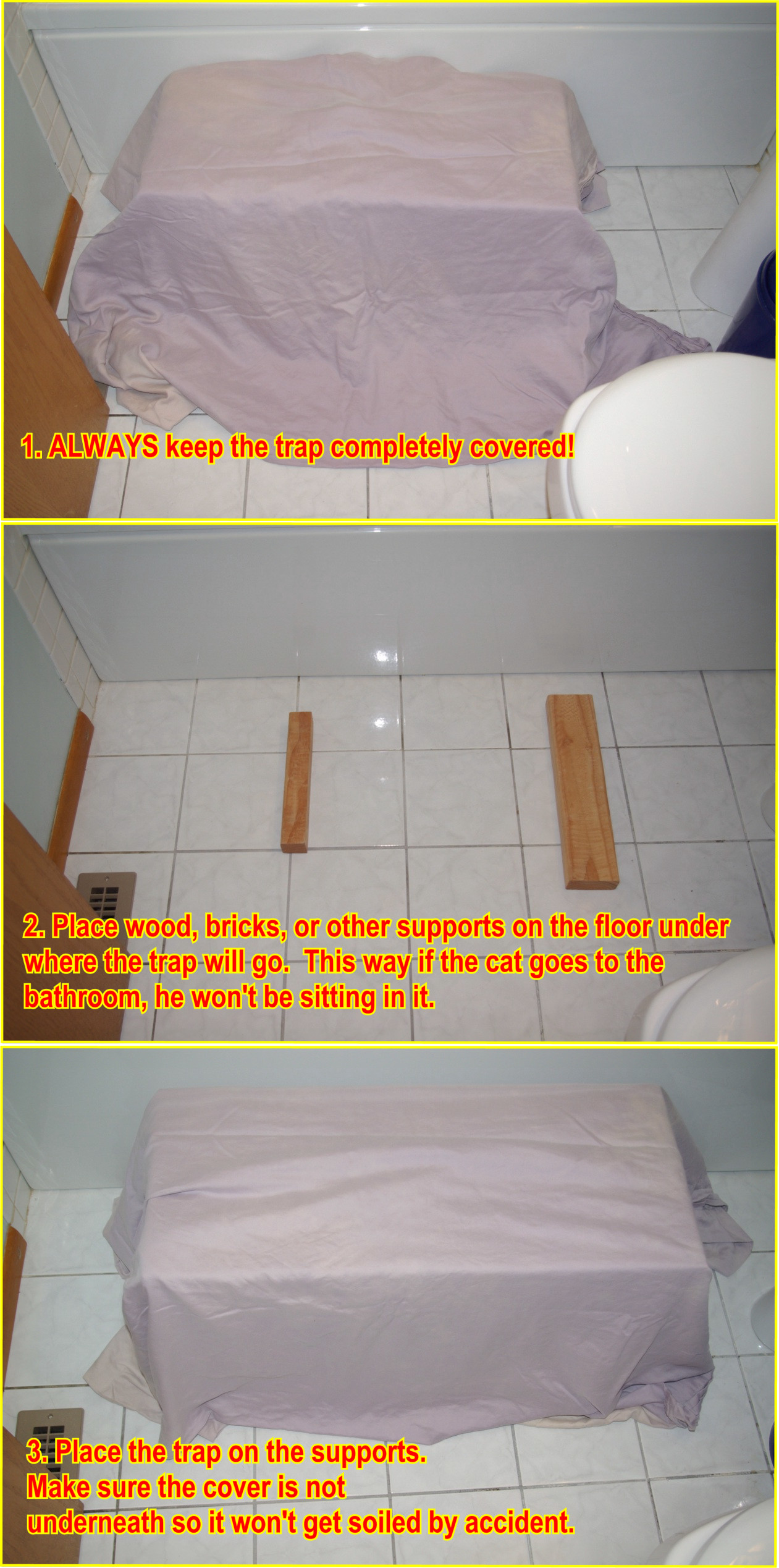Sometimes a feral cat needs to be held for more than a few hours. Examples of this could be if the cat has a medical S/N appointment for the next day,
needs to recover overnight or longer after a medical procedure, must be given medications, or his permanent home is not available.
As a general rule, feral cats should NEVER be removed from the trap. Likewise, the trap door should NEVER be opened while the cat is inside.
This is extremely important. Feral cats are QUICK, AGILE, and often DESPERATE. They will often try to escape if given the slightest opportunity, and
besides potentially being lost forever, in the process hey can also injure themselves or the trapper.
So whenever possible, it's best to just leave the cat safe and alone in his trap, covered, and in peace and quiet.
In situations where the cat needs to remain in the trap for more then a few hours, the trapper should consider taking extra measures to insure the cat stays
healthy and comfortable. As a first step, the trap should be raised slightly off the ground, so that if the cat has to go to the bathroom, it can fall
through the bottom of the trap and he won't have to lie in it or get it all over himself. Almost anything can be used for the raised supports under the
trap. Pieces of wood and bricks perfect, but as long as the material is sturdy and solid, it will do.
Note that the cover stays on the trap while it's on the supports, because we still don't want the cat to be able to see out. But try to keep it from being
directly under the trap if possible. That way it doesn't risk getting soiled.

If the cat will need to be fed or given water, it's best to try to do it through the bars of the cage if possible (if there already small bowls inside the trap).
A watering can with a spout is good to pour water, and wet food can sometimes be squeezed through on a small spoon or knife.
But if you need to get inside the trap while the cat is still inside, you need a way to keep him contained while the door is open. The easiest method is to use
a specially made "trap fork", which slides between the bars.

If you don't have a trap fork, don't worry, though. You can use anything that will fit. It just needs to be relatively strong and rigid, small enough to fit
through the grid, and long enough to go side to side with a couple of extra inches on each side. Common examples around the house might be dowel rods, handles
for various things, plant supports, BBQ skewers, pipe, or even coat hangers.
But always remember, safety first! Err on the side of caution. If you aren't sure something will work, it's best not to risk it. Just keep looking until you
find something else.



